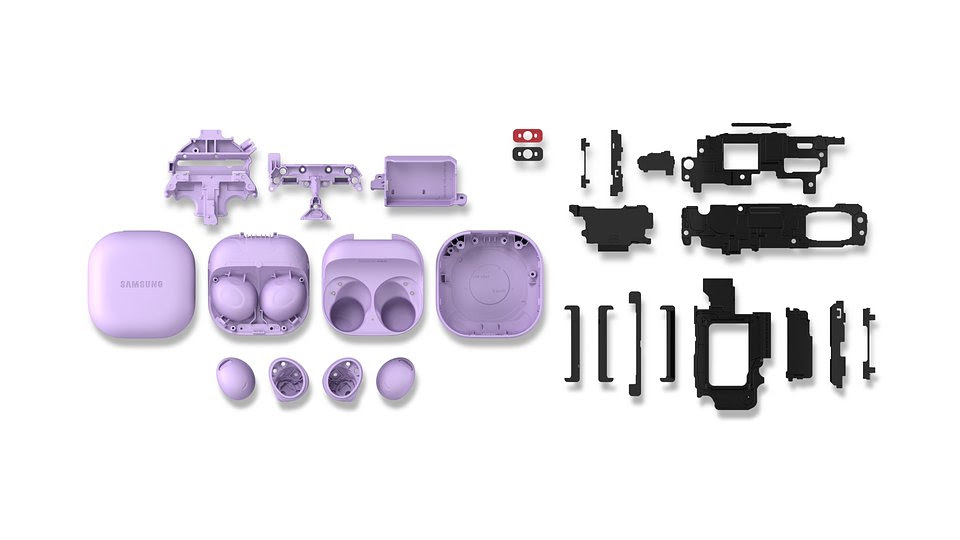The Mobile eXperience Business District has made progress in its commitment to do more with less as part of the Galaxy for the Planet initiative.

The South Korean giant has announced its progress towards achieving sustainability goals set for 2025 in the MX (Mobile eXperience) working area. Key initiatives include developing and integrating recycled materials into products, designing more environmentally friendly packaging and reducing e-waste, and giving new life to old Samsung Galaxy devices.
Since announcing the Galaxy for Planet initiative in August 2021 Unpacked, Samsung has been keen to create, recycle and reuse resources that would otherwise become harmful waste, thus reducing its environmental footprint and using innovation to help preserve the planet. Today, Samsung shares the progress made so far in its sustainability journey.
“Samsung is taking consistent and impactful actions that help protect people and the planet. We marry sustainability and innovation in everything we do,” said TM Roh, President and Business Director of Mobile eXperience at Samsung Electronics. “We are proud of the progress we have made to date, but At the same time, it was a humbling experience that allows us to continue our journey to achieve our vision of sustainability with more conviction and rigor than before.”
Expanded use of recycled materials in Galaxy Z Fold4 and Galaxy Z Flip4
Developing new and recycled materials is a major area of Galaxy for the Planet. The more Samsung recycles, the more resources it saves. While material reuse in Galaxy devices presents many challenges, the benefits to the planet make the effort worth it.
Samsung designed the new Galaxy Z series and Galaxy Buds2 Pro with abandoned fishing nets that can end up in the ocean.
It all started fusing into the Galaxy S22 series in February 2022, and there are now eleven Galaxy devices using salvaged fishing nets, including the Galaxy Book2 Pro series and Galaxy Tab S8 series. By restructuring abandoned fishing nets into a high-performance material for Galaxy technology, Samsung is helping reduce the impacts of plastic pollution – 640,000 tons of fishing nets are abandoned and oceans are polluted each year.
In this sense, reusing discarded fishing nets is just one example of the progress Samsung has made in increasing the use of recycled materials in its products.
In addition to fishing nets, Samsung has incorporated other environmentally friendly and post-consumer (PCM) materials, as well as bio-resin, into 90% of Galaxy devices launched last year. In the Galaxy Buds2 Pro, more than 90% of the product is already made from recycled materials.
This process requires complex engineering and technical skills to ensure the overall quality, safety and reliability of all new materials incorporated into Samsung’s innovative technologies. Samsung plans to increase investment in research and development to source and convert new materials for use in Galaxy products, thereby increasing the presence of recycled materials in each device.
Changing the way Galaxy products are packaged
The company has set a goal of eliminating all single-use plastics in mobile product packaging by 2025, and the company has already reduced a significant amount of single-use plastic in its current Galaxy smartphone packaging, including new foldable devices. Samsung will explore more ways to eliminate single-use plastics from packaging, evaluating every aspect of packaging design, down to the smallest detail.
A journey that started with the launch of the Galaxy S22 series, but Samsung currently uses 100% recycled paper in its flagship product packaging.
By doing so, the South Korean manufacturer will be able to supply nearly 51,000 trees with the Galaxy S22 series and the new Galaxy Z series this year.
The company also reduced the packaging size of the Galaxy Z Flip4 by 52.8% and the Galaxy Z Fold4 by 58.2%, respectively, compared to Samsung’s first generation of foldable smartphones. By reducing the size of each device package, Samsung ends up reducing its environmental footprint in moving these units by trucks, planes, and ships. The company estimates that this reduction in package size equates to a reduction in carbon emissions during transportation of approximately 10,000 tons by the end of 2022.[footnoteRef:6]. In addition to the ever-evolving packaging for flagship smartphones, the company will expand eco-friendly packaging to other product categories.
Large-scale solutions that reduce e-waste
More than ever, reducing e-waste is critical to advancing a circular economy that preserves and replenishes the planet’s finite resources. According to the World Economic Forum, 57 million tons of e-waste were generated in 2021 and 2 million tons are expected to grow annually.
To solve this problem, Samsung has expanded the Galaxy Upcycling Program, which breathes new life into older smartphones in the Galaxy range. With Galaxy Upcycling at Home, Samsung is bringing smartphones back with a simple software update that turns them into smart home devices that support everyday needs like child and pet care.
An important part of Galaxy Upcycling is ensuring that these sustainable practices not only support the environment, but also improve people’s lives. The company also converts used Galaxy Upikes into EYELIKE™ grade medical diagnostic equipment that provides much-needed eye care services in underserved communities. This program has powered hundreds of Galaxy devices and provided essential eye care to more than 13,000 patients in Vietnam, Morocco, India and Papua New Guinea.
way forward
Samsung has set clear sustainability goals by expanding solutions across its businesses. In areas as diverse as reusing discarded fishing nets for Galaxy devices, using plastic-free packaging, achieving zero waste in landfill and no spare consumption of smartphone chargers, Samsung realizes its Galaxy vision of the planet one step at a time. For the company, more challenges have emerged along the way, but Samsung wants to take responsibility for continuing to report on the progress of its mission to make positive change.

“Coffee trailblazer. Social media ninja. Unapologetic web guru. Friendly music fan. Alcohol fanatic.”

